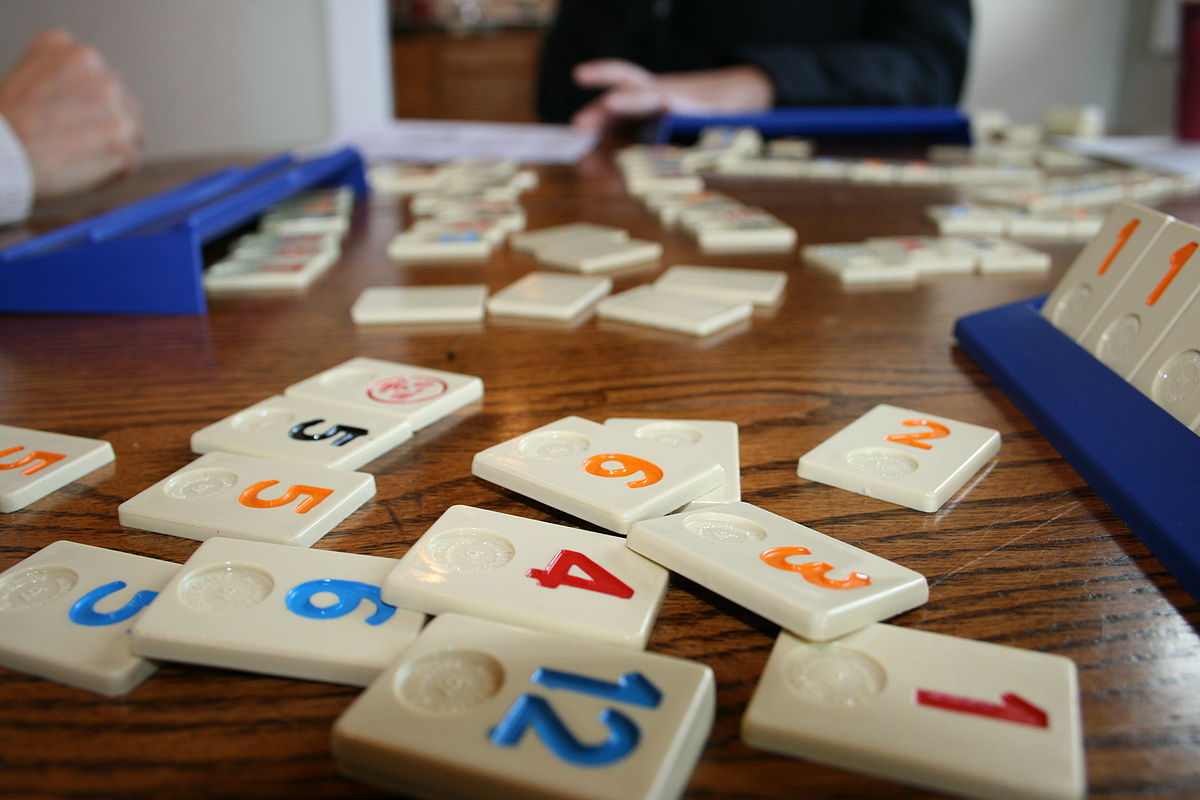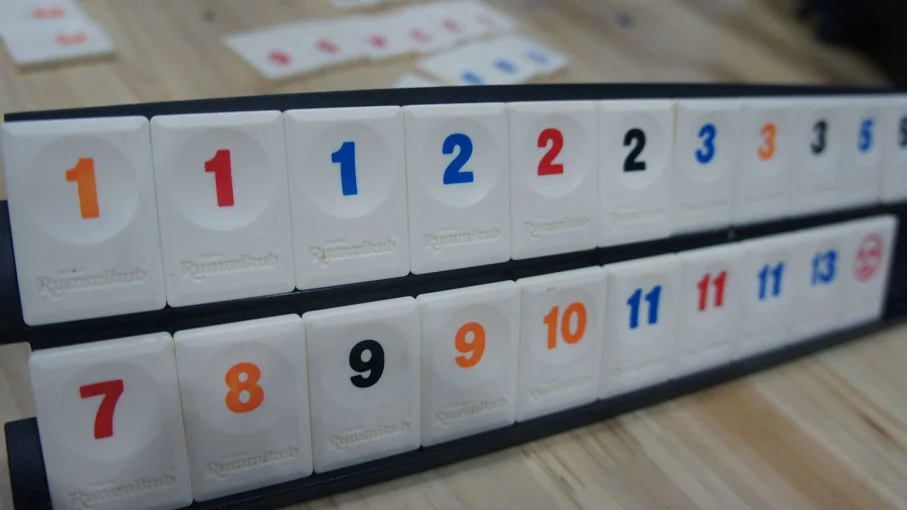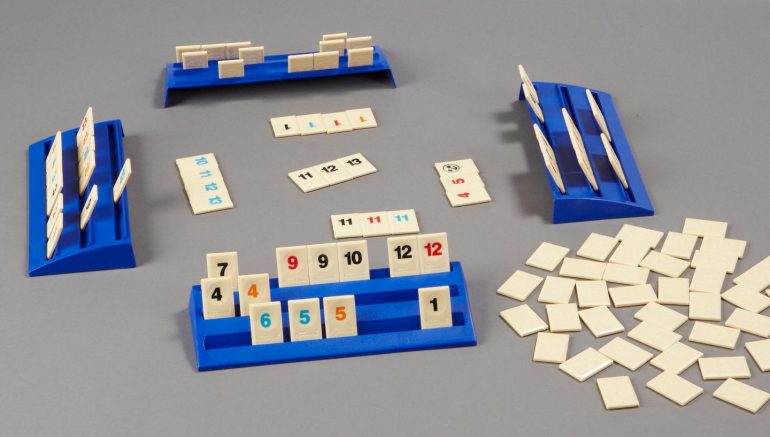Rummikub - A Classic Rummy-Based Tile Game
Players: 2-4
Ages: 6 and up
Purchase: Buy on Amazon (affiliate link)
Math Ideas: Counting, Addition, Combinations
Questions to Ask: How can you use these tiles to build a new set of groups and runs?
Often, when I teach my kids a game, we play a couple of "face up" rounds, where everyone can see each other's cards or pieces. During the game, we talk freely about every player's options, as well as strategies that might pay off in the future.
As I've begun playing games with more and more kids, I've come to realize that face-up variations of games are just as fun! Instead of patiently waiting my turn, I am able to engage my kids in a conversation about what their possible goals might be, and how they can reach those goals.
I'd like to illustrate this idea by discussing the game Rummikub, a classic tile-based game that I was introduced to on a family beach trip this past summer.
How to Play
If you've ever played a rummy-based game, you'll be familiar with the basic mechanics of Rummikub.
The game is played with 2-4 players. Each player draws 14 tiles. The goal of the game is to get rid of all your tiles by making groups (several tiles of the same number but different colors) or runs (several tiles of the same color in numerical order like 3,4,5,6).
There are a couple of other scoring rules, but the most important rule is as follows: Once any player has played a group or a run, you may add onto those groups, or use those tiles to construct entirely new groups and runs.
For example, if another player just made a long run of blue numbers 2,3,4,5, 6, you could split this into two separate runs by adding a blue 4 of your own. Now the board has two runs, one blue set of 2,3,4 and another set of 4,5,6.
This rule allows you to get quite a bit more creative than in a simple game of gin or rummy. You can build all sorts of complicated sequences of groups and runs that just might work... But be careful! If you move a bunch of tiles and don't end up with a valid set of groups and runs, you pay a big penalty.
Where's the Math?
Rummikub tests your working memory and ability to compute variations, regardless of your age. The core of the game is also its most mathematically rich element.
Take this set of tiles for example: At first, the group of four 4s seems like a no-brainer. And yet, that orange 4 could be the center of a run of orange numbers, if you are so lucky to draw an orange 2 or 5.
Of course, it's unlikely to draw those exact tiles, but if you're playing with three other players, one of them might play an orange number that you can repurpose for your own run.
This is why Rumikub is such a fun, fascinating game, even on your opponent's turn: as conditions change, new options are available and old options are taken away. You could build an entire strategy around a group of 7s, only to see them cannibalized by your opponent. But wait! Now there's a black 10 that you could use! Wait, can I use that piece? Well, if I move these three and then split that run into two runs...
Additionally, the scoring of Rummikub is points-based, involving both positive and negative points. Your kids will get lots of addition and subtraction practice if you allow them to be the score-keeper. But y'all know me at this point - I'm not recommending a game just because you add up the points at the end. The math in Rummikub is way better than that!.
Questions to Ask
As I mentioned above, Rummikub is a great game to play face-up, even once your child has mastered the basics.
At first, the fourteen starting tiles are intimidating, and your child may need help making their starting meld (where they play tiles whose numbers add to at least 30). If you can see their tiles, you can give them hints such as "How could you build a run using that red 8?"
Another benefit of playing face-up is that you can think out loud while you arrange and re-arrange your tiles. You can even share your thoughts about the tiles you hope will come available on later turns, saying things like "I can't make a run yet, but if someone plays a black 5 I think I can use it to make a long run."
If you've modeled this discussion on your own turns, then you can prompt your child to investigate their own tiles in the same manner. "What tiles do you hope to be available on your turn? What other options do you have" This sort of discussion is particularly helpful when your child has zeroed in on a particular strategy, but may have one or more alternatives that they are missing.
As I wrote this newsletter, I thought of a great mini-game you could play to introduce the game: Let your child draw fourteen tiles, then set out four or five groups and runs on the board. Ask your child how they could split these groups or build off these sets to use as many tiles as possible. Make it a contest: "I can use 8 of the tiles in our hand. How many can you use?"
There's probably even some fun puzzles you could make, where you give your child a specific set of tiles that can be completely used in a single turn. If that sounds like fun to you, then you are reading the right newsletter for sure!
Great, see what y'all made me do? Now I gotta go buy a copy of this game and make some puzzles for my son! I can't wait until the next beach trip. But clearly, I don't have a game addiction, and it's actually your fault that I'm headed back to the store. Just so we're clear.
Click here to buy Rummikub on Amazon (affiliate link)







